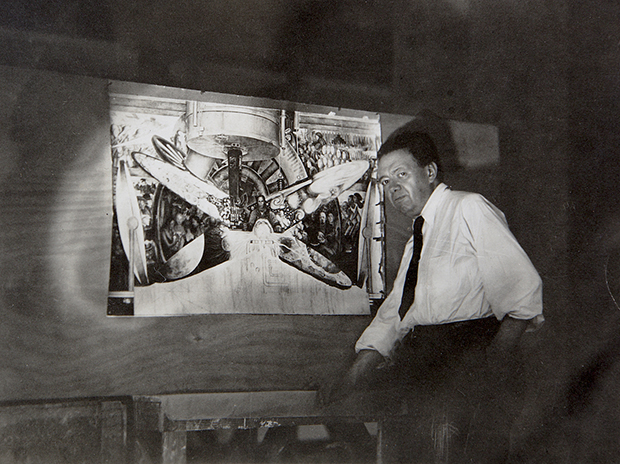
How Diego Rivera tried to paint the future
On the anniversary of the artist’s death, we look back at one his most prophetic and infamous works
Many artists hope their art will change the world, yet few work with so clearly defined a set of social ambitions as Diego Rivera. The Mexican artist, who died, on this day, 24 November, in 1957, aged 70, had experimented with cubism and other modernist styles, yet he became best known for straightforwardly figurative murals that, while remaining lifelike in style, depicted the world as he wanted it to be, rather than as he found it.
Take his 1923 murals for Universidad Autonoma de Chapingo. As we explain in our book, Art & Place: Site Specific Art of the Americas, these 17th century ecclesiastical buildings were expropriated by the government during the Mexican revolution, and given over to the National School of Agriculture.
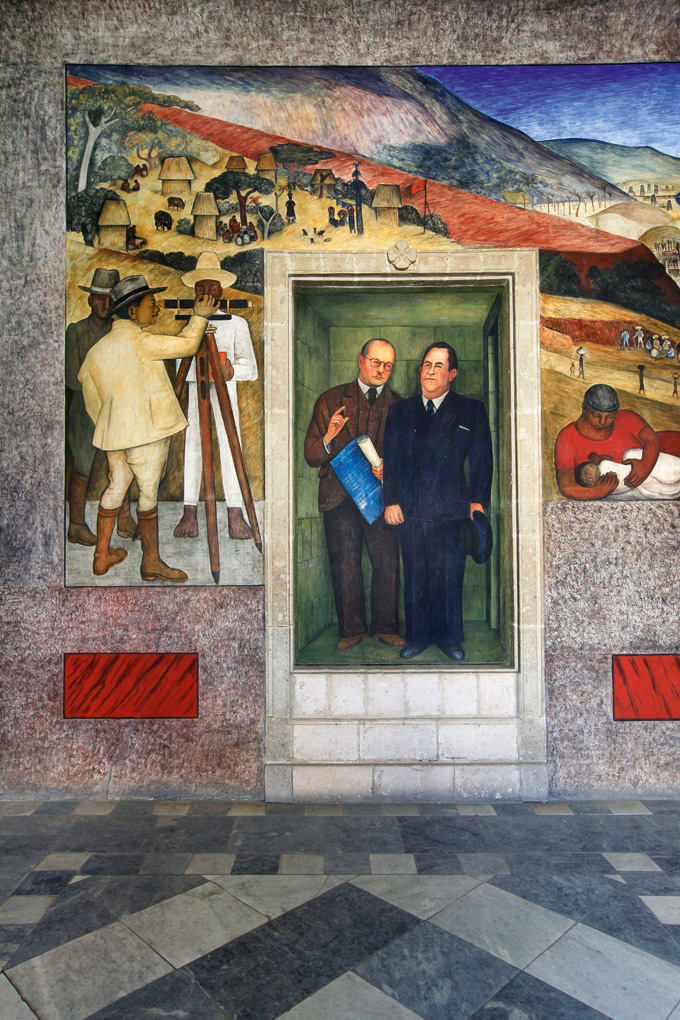
Drawing on new socialist ideals, and perhaps, less consciously, Christian traditions, Rivera painted a series of allegorical murals, such as the two-panel piece ‘Good Government’ and ‘Bad Government’:
“The first depicts peasant and industrial workers toiling in harmony for the greater good of society,” our book explains, “while the second explores the exploitation of the peasant, teacher and industrial worker at the hands of the elite."
Rivera continued to create similarly didactic, left-wing murals throughout his life. Consider the way he celebrated Detroit’s automobile workers, in his 1933 Detroit Industry murals for the Detroit Institute of Arts. Again, while the critics can hardly detract from his compositional and figurative abilities, they can find flaws in the fidelity of his images, as our book explains.
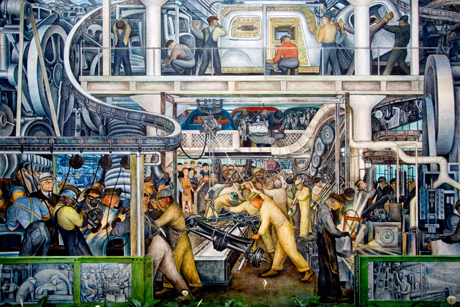
“The murals are remarkably accurate in terms of their representation of Ford’s production lines,” Art & Place explains. “However, Rivera has exaggerated the density of the workforce (which had been greatly reduced as a consequence of the Great Depression) and dressed them in overalls to conform to his vision of proletarians.”
Rivera’s political views did not stop one of America’s foremost capitalists, Nelson Rockefeller, from commissioning the artist to create a mural for New York’s Rockerfeller Center. In 1933, the painter was asked to create a work that captured the social, political and scientific possibilities currently available to man. Unfortunately, Rivera and Rockerfeller’s vision of the future diverged in one key respect.
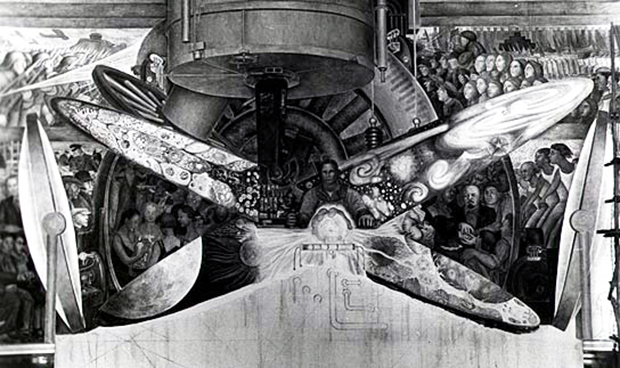
“The mural depicted two intersecting ellipses with cosmic and biological imagery, and a factory worker manning a control panel,” our book explains. “Rivera included a portrait of the communist leader Vladimir Lenin that had not appeared in the preliminary sketches.”
Rockerfeller, upset by the inclusion of this revolutionary communist, asked the artist to remove the figure; Rivera refused, and Rockefeller destroyed the half-finished work.
However, Rivera’s picture did not altogether disappear. Working from photographs of the New York piece, Rivera recreated the mural in Mexico’s Palacio de Bellas Artes the following year, making a few key additions.
“In the Mexico City version, called Man, Controller of the Universe, Rivera centres the composition on a factory worker flanked by native flora, while capitalists enjoy bourgeois leisure at the expense of the workers, who rally behind Trotsky and Lenin.”
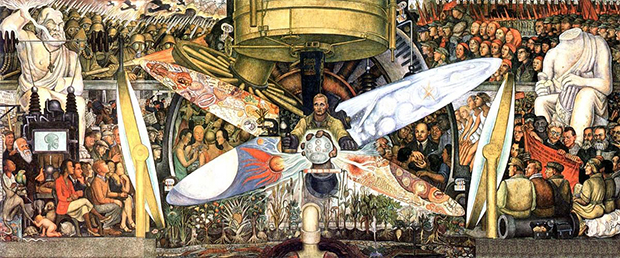
The addition Leon Trotsky into this vision of a future for mankind must have felt like an obvious inclusion for Rivera, yet it would prove prophetic in ways that artist himself could not foresee. Rivera befriended the Red Army leader, petitioned the Mexican government on his behalf, and housed him during Trotsky’s exile in Mexico, back in the late 1930s.
Yet following a quarrel with Rivera, Trotsky moved out of the artist’s home, and was later killed by assassins loyal to Joseph Stalin, enabling his old Moscow comrade to take control of the Russian state, steering it into darker territories than those depicted in Rivera’s murals.
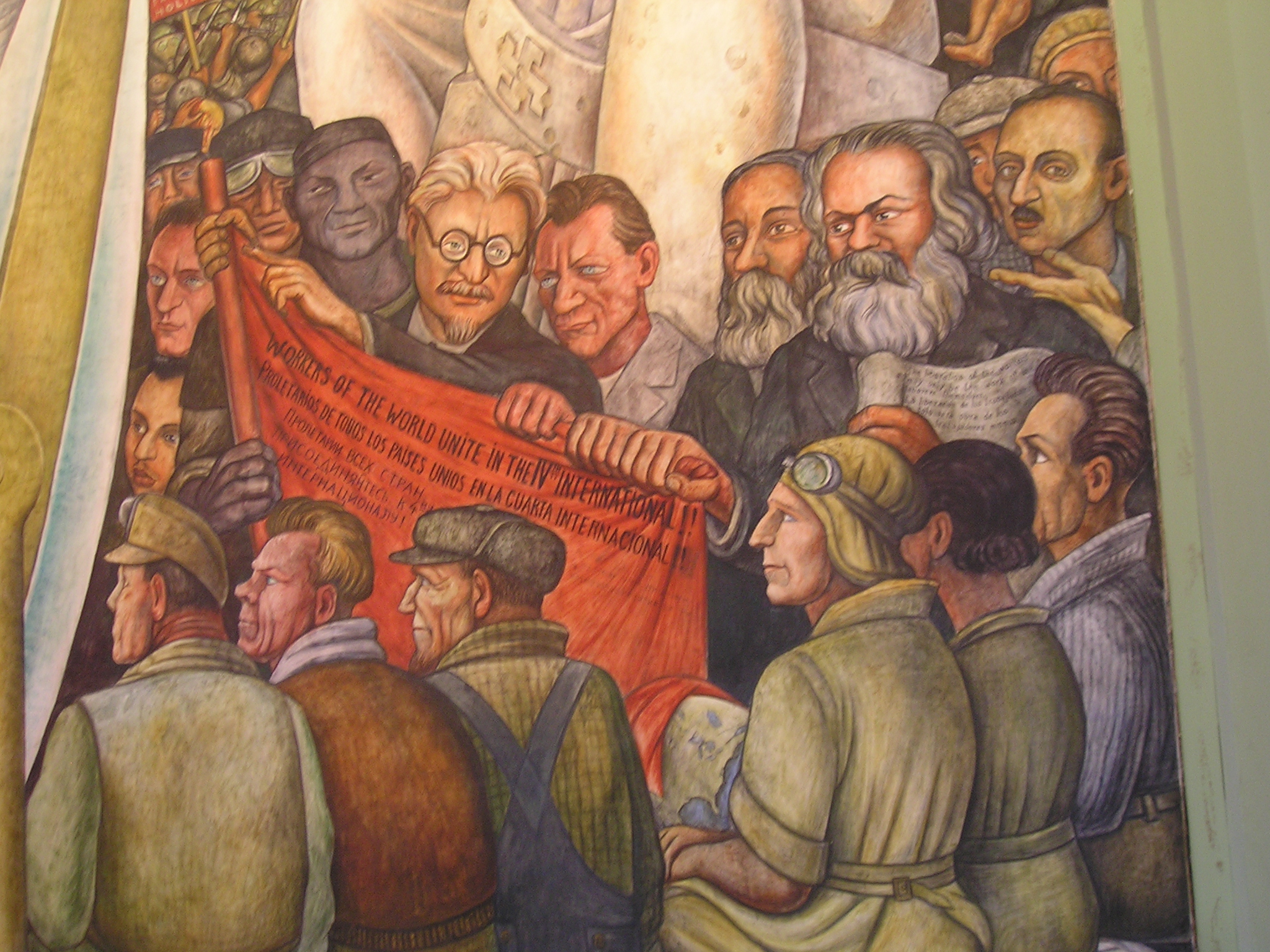
Despite the artist’s intentions, today, his mural highlights the ways in which scientific and social progress do not march forward in step, and how, with all the technological ingenuity and artistic prowess, no artist can truly show what tomorrow holds.
For greater insight into these works and many other site-specific pieces in the Americas buy a copy of Art & Place here.